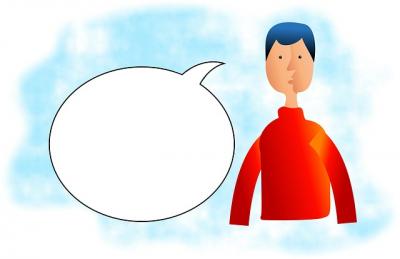Speak Life: Words are powerful.

Online test
Find out the severity of your symptoms with this free online test
 Whoever created the saying “sticks and stones can break my bones but words will never hurt me” was either in complete denial or had no clue about the devastating effects of words. Things we hear in childhood echo in our minds for years to come, often shaping how we think and feel about ourselves. Some of it gets put there before we are conscious of it happening.
Whoever created the saying “sticks and stones can break my bones but words will never hurt me” was either in complete denial or had no clue about the devastating effects of words. Things we hear in childhood echo in our minds for years to come, often shaping how we think and feel about ourselves. Some of it gets put there before we are conscious of it happening.
Cognitive behavioral therapists work hard with clients to untangle words from beliefs that shape actions. One of my former clients, we’ll call her Jane, struggled with self-esteem and insecurity for most of her life. Growing up, she was told by her stepmother that her real mother didn’t want her over and over whenever she got in trouble, which was quite a lot. Jane came to therapy in her 30’s and for something else entirely, but through CBT work, discovered that those words shaped her entire life. She learned to believe that if her biological mother didn’t want her, then no one ever would. That belief shaped her destructive substance use, her emotional detachment in relationships, her distrust of others, her depression, anxiety, and eating disorder.
Words are insidious. They take hold and shape our thinking without our conscious knowledge. Jane openly rebelled against her stepmother and told herself over and over that her real mom did want her, but something happened to prevent them from being together. When Jane met her biological mother in her 20’s, she found out that something did happen and that her biological mom had tried to contact her for years. Despite knowing that in adulthood, she never felt close to her mom. Even when she tried, something was in the way. They ended up having a good relationship, but the damage of her stepmother’s words was done.
Timing is Everything
Erik Erikson’s psychosocial stages of development help explain the impact of timing of words and much of it occurs before we have the cognitive ability to combat the words. Erikson’s theory of personality and development is based on the concept of stages that build upon each other beginning at birth. Each stage consists of a conflict that must be resolved. Once a conflict is resolved at one stage, then the next conflict is in play under the influence of the previous conflict. Think of leveling up.
The first level occurs immediately after birth and resolved within the first 18 months of life. The conflict that needs resolution is trust versus mistrust and forms the basis for our perception of relationships. In other words, will my needs be met? Can people be trusted? Can I trust people with me? Notice that this conflict occurs in infancy when a baby does not have the cognitive ability to dispute or counter anything that happens. Therefore, the way caregivers or parents respond to the child’s needs will determine how that fundamental conflict resolves. In cases where a child’s needs are met, the child learns to hope, learns that others can be trusted and takes that hope to the next stage. Neglected children level up with a fundamental distrust of others, taking distrust to the next stage.
The second stage, autonomy versus shame and doubt, occurs between 18 months and 3 years and the resulting of that conflict determines a person’s self-efficacy. Think of the kids you know under 3 and how they are always trying to do things by themselves. The fundamental question is, “can I do this?” If kids have the freedom and guidance to explore, to fall and get up, then they learn they can or the power of will. They level up believing they can do anything they set their mind to. Those children with controlling caregivers or those who neglect them come to learn shame, which is in its purest form the feeling that I am bad/not worthy/not good enough/ or fill in the blank. During this stage, children are also developing language and can sense meaning in communication. Words at this stage influence the recording of the self-talk tapes. Perhaps you can see where I’m going with this.
The conflict in the third stage which occurs between 3 and 5 years old is initiative versus guilt, and its resolution will determine the level of purpose a child develops. The fourth stage occurs between ages 5 and 12 with the conflict of industry versus inferiority and further develops a child’s self-esteem based on accomplishments. The fifth stage, from 12-18 years old is identity versus role confusion where a teen develops their own set of values, beliefs, and goals.
Remember, the resolution of each stage gets carried to the next level as either armor or baggage. Now, imagine the effect of words on a child’s ability to get through each conflict. If a child hears at age 4 that he or she will never be as smart as their sibling, how does that influence initiative? That phrase, added to the internal self-talk tape, shapes how the child thinks about him or herself from that time forward. Then, imagine a young adolescent starts pulling hair compulsively. Family members or friends notice bald spots or unusual hair growth and make nasty comments or start asking questions. The young adolescent tries to stop but can’t. Where do you think the nasty comments of friends and family go? Those words add to the tape. Keep in mind the importance of peers during the fourth and fifth stages and then think about the added weight words of friends might have.
Internal Words
Those of us who have been in therapy know how self-talk works. Think of it as theme music that continually plays in your head whether you’re conscious of it or not. Some of us have negative tapes, and it can feel like a heavy burden. Wading through heavy swamp mud just to get to the start of the day. Why? Because you have to push through and battle your internal tapes just to get to the starting point.
The challenge with self-talk tapes is that the recordings happen without our input in early developmental stages. It takes a lot of work to erase and re-record them. Just as Jane didn’t realize the impact of her stepmother’s words which were used from the time she was 5 years old all the way through adolescence, we are often not aware of what’s on those tapes. They end up as subliminal messages that cloud every belief and action.
Changing the Tape

The good news is that you can record over those tapes. Cognitive behavioral therapy is a terrific tool because a therapist can help you translate your tapes. The theory behind CBT is that an activating event, such as Jane’s stepmother’s words, created a belief. The belief, in Jane’s case that she wasn’t wanted, influenced her behavior. This is a simplified version of how it works, but Jane had to learn to take control of her tape. First, she had to learn to recognize that there was a tape and identify the messages. After identifying the messages, she learned which beliefs the messages fueled as well as which behaviors resulted. That was the hard part. Then, we worked on proving the messages untrue through a process of determining her stepmother’s qualifications and motivations for saying such things and then looking at what was true about Jane. Lastly, we created positive tapes for Jane to use to counter and record over the negative tapes.
Steps to Changing Tapes
- Accept that a tape exists.
- Listen to the tape objectively to identify the messages.
- What belief is the message tied to?
- Determine the source of the message. Where did it come from? Who said it and why?
- How does the message influence behavior?
- Dispute the message. Why is it untrue?
- Rewrite the message. Create a positive version to record over.
- Re-record the message by practicing positive self-talk. Catch yourself when you “hear” the negative talk and actively replace it.
The way you talk about yourself reveals the theme of your internal tapes. It sets the tone for the way others will talk to you and about you. The words you use can either build someone up or tear them down, therefore, speak the words you want to hear. Speak the words you wish you could have when you went through your developmental conflicts and speak the words of the life you want to live.
What will your new tape sound like? Speak life to yourself and to others.

Online test
Find out the severity of your symptoms with this free online test
Start your journey with TrichStop
Take control of your life and find freedom from hair pulling through professional therapy and evidence-based behavioral techniques.
Start Now



